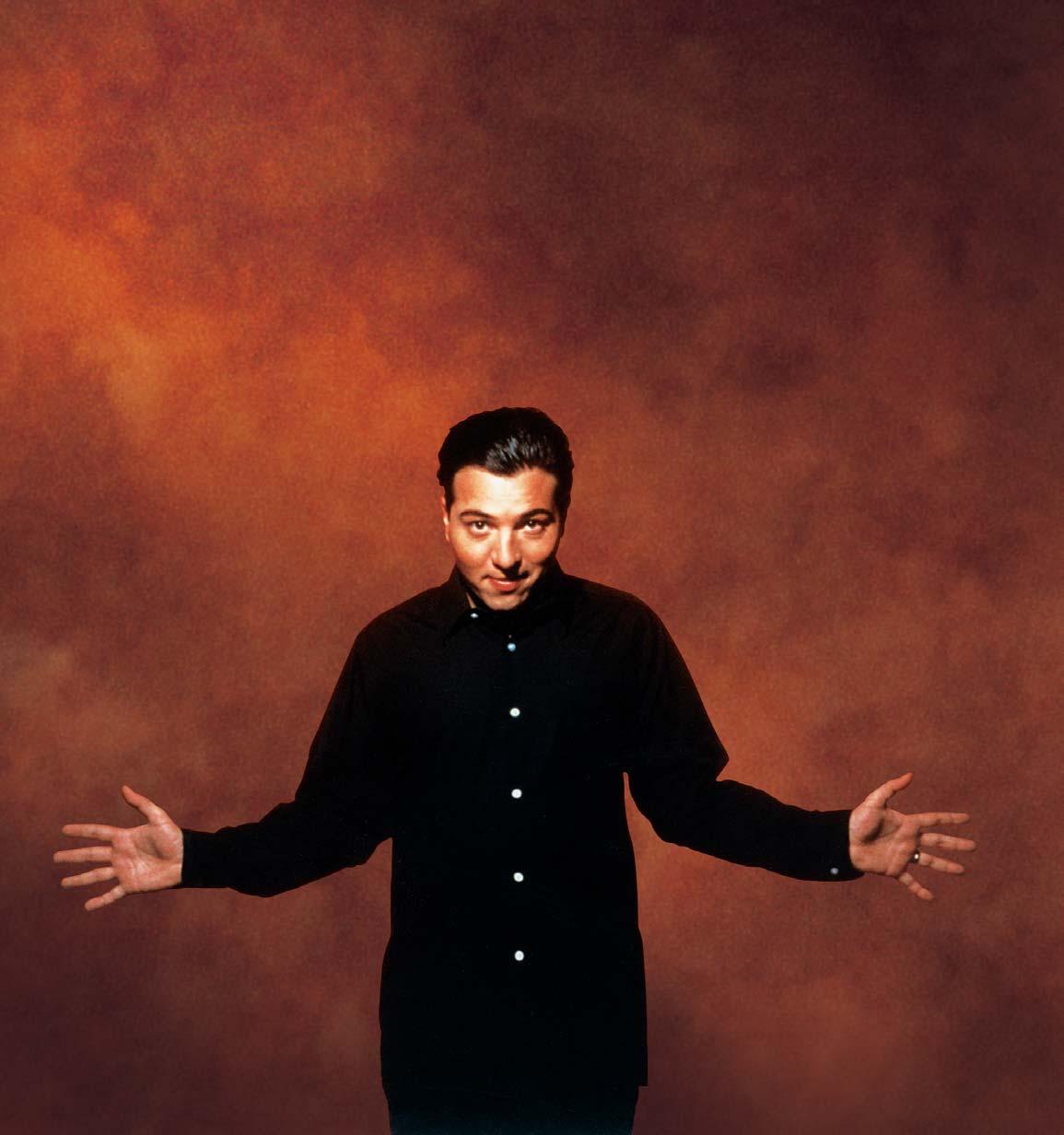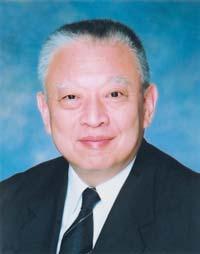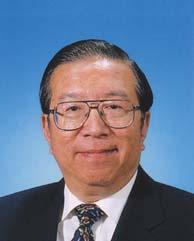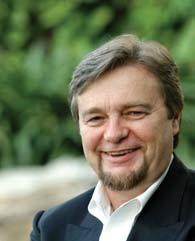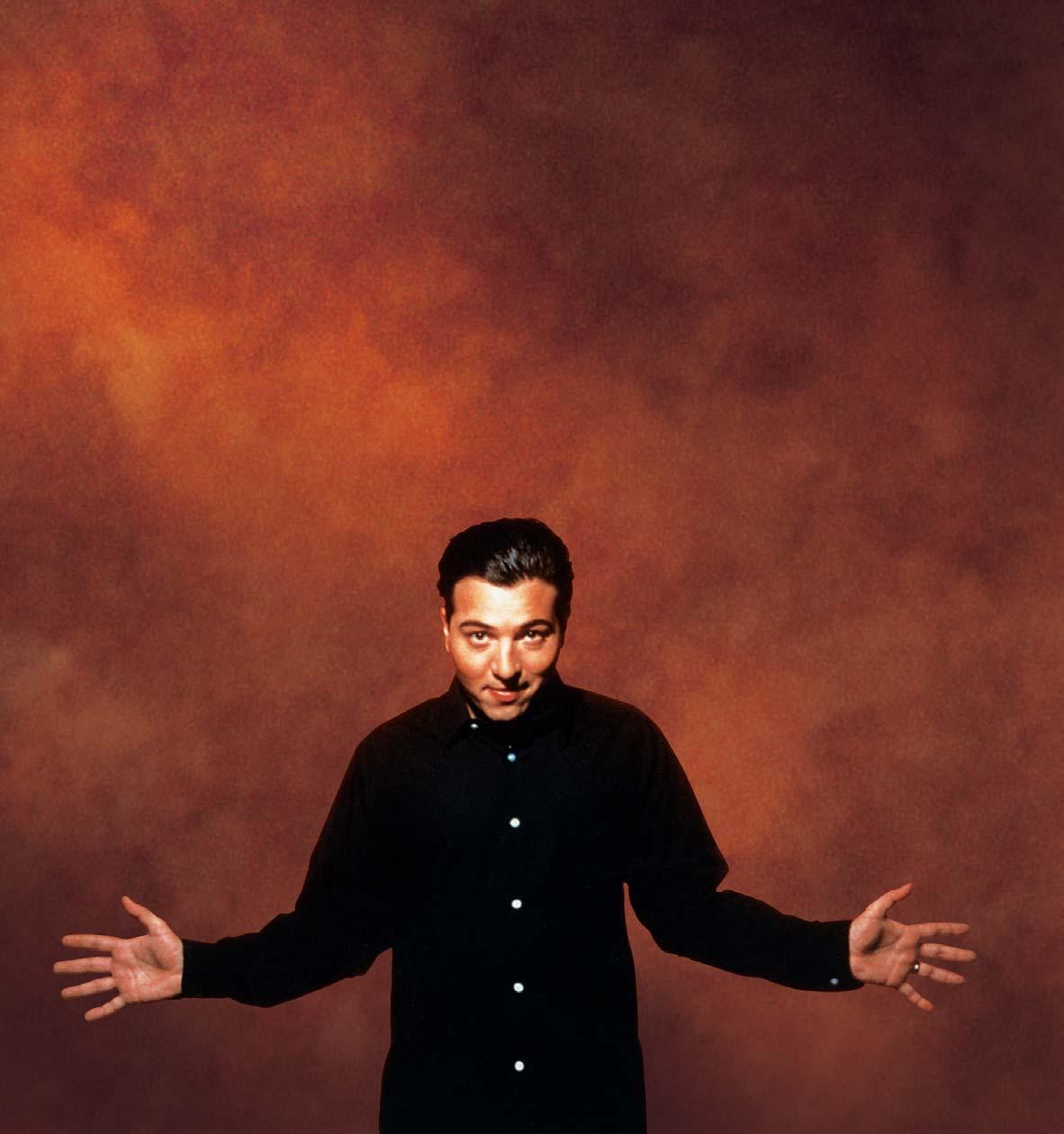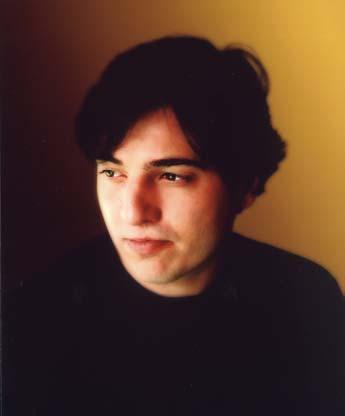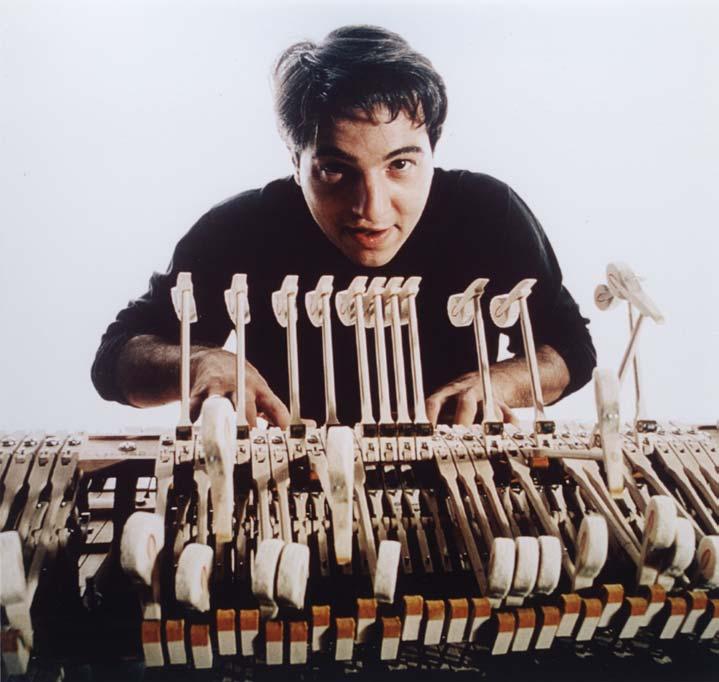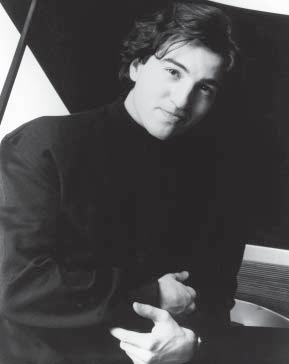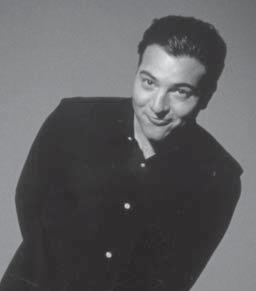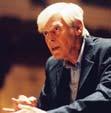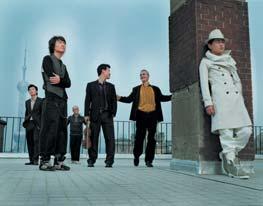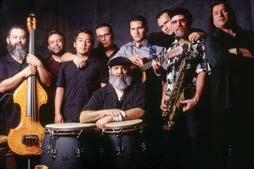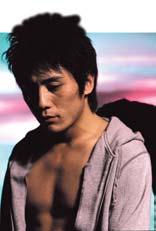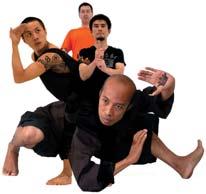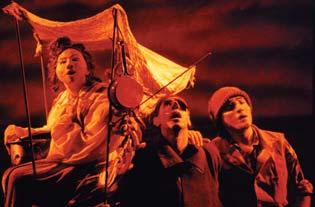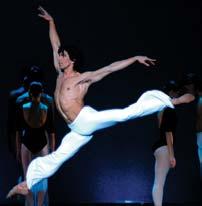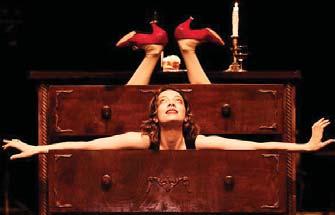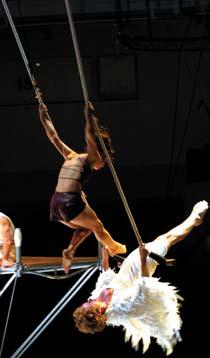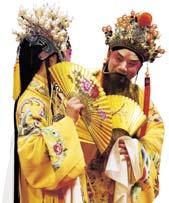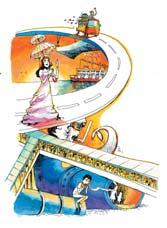Fazil Say: The Genius from Turkey
Born in 1970 in Ankara, Turkey, Fazil Say studied piano and composition at the Ankara State Conservatory. At the age of 17 he was awarded a scholarship that enabled him to continue his studies with David Levine at the Robert Schumann Institute in Dusseldorf. He completed his musical education at the Berlin Conservatory in 1995; having won the Young Concert Artists International Auditions in 1994, which launched his international career.
Fazil Say has been a guest performer with the New York Philharmonic, the St Petersburg Philharmonic, the BBC Philharmonic, and many other leading orchestras worldwide. In addition he has played many leading festivals including the Salzburg Festival, the Ruhr Piano Festival, as well as performing in many leading concert halls. In 2004 he gave his debut at the International Piano Series in London and the World Piano Series in Tokyo.
Say’s passion for jazz and improvisation led him to found a ‘worldjazz’ quartet with the Turkish Ney flute virtuoso, Kudsi Ergüner. During the summer of 2000 the quartet performed in St Denis, Paris, Montpellier and various jazz festivals.
Fazil Say is just as much a composer as he is a pianist. Black Hymns, which he composed at the age of 16, was performed as part of Berlin’s 750th anniversary celebrations. In 1991 he premiered his Concerto for Piano and Violin with the Berlin Symphony, and in 1996 he premiered his second piano concerto Silk Road in Boston. The Turkish Ministry of Culture commissioned his oratorio Nazim, based on poems by the famous Turkish poet Nazim Hikmet, which premiered in Ankara in 2001 in the presence of Turkey’s president.
The world premiere of Say’s Piano Concerto No 3, commissioned by Radio France and Kurt Masur, was performed by the Orchestre National de France in Paris in January 2002 to great public and critical acclaim. His oratorio Requiem for Metin Altiok was premiered in 2003 at the Istanbul Festival in front of an audience of 5,000 people and has been recorded on CD. In 2003 he was appointed ‘Artist in Residence’ by Radio France.
Fazil Say’s first recording, a Mozart disc released in 1998, garnered rave reviews from the press. His discography includes Gershwin’s Rhapsody in Blue and I Got Rhythm Variations ; a highly acclaimed Bach recital; and Stravinsky’s own arrangement of Le Sacre du Printemps for four hands.
Say has received numerous international awards for this recording, including the 2001 Echo-Preis Klassik and the 2001 German Music Critics Best Recording of the Year Award. On his most recent recording released in autumn 2004, Fazil Say plays Mozart’s three Piano Concertos – K 414, K 467 and K 488, accompanied by the Zurich Chamber Orchestra, conducted by Howard Griffith.
K 1
K 159
K 331 K 265
57
19 February 2005 (Saturday)
Domenico Scarlatti
15 minute interval F K 378
Sonata in F major, K 378
Sonata in D minor, K 1
Sonata in C major, K 159
Wolfgang Amadeus Mozart
Piano Sonata No 11 in A major, K 331
Andante grazioso
Menuetto
Rondo alla turca
Variations on Ah, vous dirai-je, Maman, K 265
Ludwig van Beethoven
Appassionata Sonata in F minor,
Op 57
Allegro assai
Andante con moto (leading with a break into)
Allegro ma non troppo
Fazil Say
Compositions and Improvisations
George Gershwin
Rhapsody in Blue
Three Piano Preludes
Prelude
Blue Lullaby
Spanish Prelude
F K 378 D K 1 C K 159 (1685-1757)
K 1 C K 159 1752 F K 378 1754 A K 331 1756-1791 A K331 K330-332
(1756-1791) 1778
57 (1770-1827)
1805
(1898-1937)
© Arnaud Baumann and Sipa Press
Sonata in F major, K 378
Sonata in D minor, K 1
Sonata in C major, K 159
Domenico Scarlatti (1685-1757)
Domenico Scarlatti was born in Naples in 1685. His career falls neatly into two periods. The earlier period he spent in his native Italy, where he worked under the guidance of his domineering composer-father, Alessandro, writing for both the theatre and the church. From this period there date at least a dozen operas, with early productions in Naples, Rome and London.
The second part of his life from 1720 onwards, was spent in distant Portugal and Spain, living and working in the royal courts at Lisbon, Seville and Madrid. There he composed his more than five hundred short single-movement pieces for harpsichord, called ‘sonatas’, dedicated to his royal patron, the Infanta Maria Bárbara. These keyboard works still account for the greater part of Domenico Scarlatti’s reputation today.
Only 42 of these were ever published during his lifetime, 30 in London in 1738, under the title Essercizi (Exercises), and these again with 12 others the following year. Included in both of these publications was the D minor Sonata (K 1), a lively Allegro characterised by rippling semiquavers. The two other works performed here are preserved in manuscripts now in Venice. The C major Sonata (K 159), dating from 1752, is an Allegro in 6/8 time, and the F major Sonata (K 378), dated 1754, an Allegro ‘alla breve’.
Piano Sonata No 11 in A major, K 331
Wolfgang Amadeus Mozart (1756-1791)
Although there are differing views as to when this piece was composed the sonata in A major, K331 is the second in a set of three sonatas (K 330-332) and has several interesting features. Mozart generally used a sonata-form Allegro for the first movement in most of his piano sonatas, but here he uses a theme and variation design instead. Another interesting point is that each movement of the sonata is based around the tonality of A. This is unusual as there is typically a change of key for the second movement to provide a necessary tonal contrast.
The use of the title alla turca for the last movement may seem exotic, but in the second half of the 18th Century there was a vogue across Europe to incorporate things Turkish into art music. Primarily this involved the use of much percussion and cymbals, and a typically noisy style, rhythmic and usually in duple time. The use of the loudly-spread left hand chords in the A major passages is clearly meant to produce this percussive effect. Additionally the movement is a rondo, but unusually the first theme occurs only twice, rather than repeatedly, while at the same time within the sections Mozart extensively repeats melodic ideas.
Variations on Ah, vous dirai-je, Maman, K 265
Wolfgang Amadeus Mozart (1756-1791)
Mozart celebrated New Year 1778 in the German city of Mannheim. His father, Leopold, had sent him there to look for work, but reports got back that the 22 year old Mozart was spending too much time drinking and socialising. Consequently, Leopold ordered him to move on to Paris, where Mozart was to present a number of concerts in which he would play his own compositions. These, it was planned, would prove to all just what a remarkable musician he was!
One of the pieces he wrote to impress his potential employers in Paris was this set of keyboard variations. A simple nursery tune, known more widely these days as Twinkle, twinkle little star, is subjected to a dose of Mozart’s very grown-up musical cleverness.
– 15 minute interval –
Appassionata Sonata in F minor, Op 57 Ludwig van Beethoven (1770-1827)
It was not Beethoven, but the music publisher Cranz, who gave this work its nickname Appassionata. Beethoven’s pupil Ferdinand Ries reports that in summer 1805, Beethoven “played for me the Allegro of the great F minor Sonata with irresistible force and mighty fire”.
At the heart of the Sonata is the sombre march-like hymn that serves as a theme for the variations making up the second movement (Andante con moto). The final movement (Allegro ma non troppo) follows without a break, a dramatic reiterated chord giving way to the urgent interrogations of tumbling scales and the almost perpetual unrest of the turbulent finale theme.
Rhapsody in Blue Three Piano Preludes
George Gershwin (1898-1937)
The piano was central to George Gershwin’s musical life, representing much more than just his tool of trade as writer of popular show tunes. His early musical training was cursory, and he was never more than proficient at reading music. So it was the piano, instead of a page of manuscript paper that served as the essential catalyst for his compositions.
Creating music more with his hands than with his head, Gershwin’s true genius was as an improviser. He performed his own dazzling piano music, including this solo version of Rhapsody in Blue, with great panache, but as a performer resisted the temptation to tackle the piano ‘classics’. Rhapsody in Blue left his piano in January 1924 only partially written down in ‘short score’, on just three or four staves. Ferde Grofé, arranger for Paul Whiteman’s New York Palais Royal Orchestra, did the orchestrations, and Gershwin himself was the piano soloist with Whiteman’s orchestra for the premiere three weeks later.
From the first, Gershwin also intended that the work could also be performed either on the piano alone as here, or with two pianos. The singer Marguerite d’Alvarez invited him to perform the two-piano version (with Isidore Gorin) at a concert late in 1926, and for the same occasion he composed several short solo works entitled Preludes. His original idea was to imitate Chopin’s set of Preludes in producing 24 of these works (one in every major and minor key), and call the set ‘The Melting Pot’. He only ever started seven or eight, however, and only three were eventually published as the Preludes for Piano. Of these, the second is subtitled Blue Lullaby, while Gershwin called another his Spanish Prelude.
All programme notes by Graeme Skinner
© Christian Steiner
Fazil Say on Gershwin
Interviewer
Fazil Say
Where would you place Gershwin’s music today?
Gershwin is really quite unique in the history of music. He wrote highly individual music that’s instantly recognisable. If, for example, you hear a tune on the radio that reminds you of Gershwin, you can be pretty certain that it really is by him.
When you compare him with a composer like Schoenberg, Gershwin might seem unprogressive, not to say facile or populist. But don’t forget Schoenberg’s remark: “The most beautiful work in the world can still be written in C major”. Gershwin’s approach to tonality combines a whole series of harmonic and melodic ideas with new and exotic elements that few composers had thought of till then: jazz and classical music, America and Europe, black and white link hands here.
What is striking about Gershwin is the incredible speed with which each section begins and ends. What do you think of this profusion of themes?
In Rhapsody in Blue, he keeps introducing new themes. It makes me think of operatic excerpts. We hear themes A, B, C and D within the very first minute. And by the time we’ve reached the end of the piece – which lasts a total of 17 minutes – there are more themes than there are letters of the alphabet. Rhapsody in Blue almost literally bombards us with surprises and fascinating themes. I think that’s why it will always be such a favourite with audiences.
Is a song composer really a composer?
The question can’t be asked in those terms. Gershwin wasn’t obliged to limit himself to established forms such as fugue, sonata or rondo. What is important is the musical content and what the composer wants to say, his originality. In Gershwin’s music there’s an extraordinary sensitivity and wit and a never-ending stream of harmonic and rhythmic ideas. And then you’ve got exotic elements that hadn’t been used before such as jazz, ragtime, musical comedy and Latin American music.
Schoenberg admired Rhapsody in Blue for its profusion of themes, but he also touched on a more technical aspect, the transitions between them. Could you say something about that?
That’s precisely where Gershwin’s great mastery lies: these little bridge passages between the themes are really quite inspired. For me, it is these that explain the power of this music. To write such brief passages is sometimes even more difficult than thinking up a tune that will stick in the memory. But all you need is a motif, a few notes on the clarinet, muted trumpet or wha-wha trombone, and you’re home and dry! And it’s precisely here that many listeners say: “That’s the passage I prefer most of all, let’s see how they’re going to perform it.”
Who were the influences on your interpretation?
As a child, I often had the chance to see Leonard Bernstein playing and conducting Rhapsody in Blue on Turkish television. I myself was 17 when I first performed it in the concert hall. It was in Ankara with the Conservatory Orchestra. Perhaps I’m not being very objective, but I have to admit that, for me, Bernstein remains a point of reference. His is a sophisticated reading, as though he were playing for a lover, late at night, sitting at the piano, a cigarette in his mouth and a glass of whisky in front of him.
How long have you been playing the Three Preludes?
I’ve been playing the Three Preludes since I was a child. I knew that Gershwin had written other pieces for solo piano, but I didn’t know them all. You rarely hear them in the concert hall. And so I did some research and have played them regularly at recitals.
Among these pieces, which do you find particularly affecting?
I like them all. They’re delightful little miniatures. Like bibelots. I never know which I’m going to like best. It depends on the mood I’m in. I remember flying in from Los Angeles for a concert in Istanbul. I’d not slept for two days. I think it was then that I gave my best performance of Sleepless Night
© 1999 Fazil Say English translation: Stewart Spencer
C Hob XVI: 35
20 February 2005 (Sunday)
Joseph Haydn
Sonata in C major Hob XVI: 35
Allegro
Adagio
Finale (Allegro)
E Hob XVI: 31
A Hob XVI: 43
Sonata in E major Hob XVI: 31
Moderato
Allegretto
Finale (Presto)
Sonata in A-flat major Hob XVI: 43
Moderato
Menuet
Rondo (Presto)
Maurice Ravel
Sonatine
Modéré (doux et expressif)
Mouvement de menuet
Animé
Fazil Say Black Earth
Sonata in B minor 15 minute interval
Franz Liszt
20.2.2005 Sun
Meet-the-Artist (Post-Performance)
If you would like to meet Fazil Say, please stay behind in the auditorium after the performance
C Hob XVI: 35
E Hob XVI: 31 A Hob XVI: 43 (1732-1809)
C
1783 1789 (1875-1937)
(1970-) 1997
© Baumann / Aufauvre
Sonata in C major Hob XVI: 35
Sonata in E major Hob XVI: 31
Sonata in A-flat major Hob XVI: 43
Joseph Haydn (1732-1809)
What matters to me is not who is playing on what instrument but rather, how the instrument is being played. So the short Sonatas of Haydn, musically telling short stories – full of sarcasm, funny, elegant, childish, interesting and singing. All of this I can find in Haydn’s sonatas and try to find my joy each time… – by Fazil Say
In the mid 1770s Haydn’s attentions began to turn away from his courtly duties as director of music to the princely Esterházy family, to the possibility of an international career. Publishing was a major part of his plans, and among his most successful ventures into print over the next decade were several sets of piano sonatas.
Of the three works performed here, he composed the Sonata in E in the mid 1770s, the Sonata in C around 1780 and the A-flat Sonata in summer 1783. All became widely known, not only in Austria, France, and Germany, but also in England. There the music enthusiast, Charles Burney, writing in 1789, warned that some listeners would find Haydn’s music “very odd, or very comical”, but added that the “queerness and comicality cease, when by frequent repetition, the performer and hearer are at their ease”.
Burney particularly recommended Haydn’s piano sonatas, noting of the outer movements in Haydn’s typical three-movement plan: “There is a general cheerfulness and good humour in Haydn’s allegros, which exhilarate every hearer”. The contrasting central movements, he found to be “sportive… and even grotesque for the sake of variety”, but insisted that they were only intermezzi between the serious business of his other movements.
Sonatine
Maurice Ravel (1875-1937)
In summer 1904 Ravel became an habitué of the Bohemian Paris ‘salon’ of a Franco-Polish couple, Ida and Cipa (Cyprien) Godebski. Other regular visitors to the Godebski’s apartment over the years included Jean Cocteau, Paul Valéry, André Gide, Erik Satie and Igor Stravinsky.
The Godebskis cemented their friendship with Ravel at the time of the public scandal surrounding his fourth and final failure to win the Prix de Rome in 1905. It was their brother-in-law Alfred Edwards, then editor of Le Matin, who virtually engineered the media frenzy referred to as ‘l’affaire Ravel’. Despite the august company frequently on hand when he visited the Godebskis, Ravel characteristically preferred spending time with the couple’s two young children, Mimie and Jean, to whom he read stories and for whom he composed his Mother Goose suite. To their parents, he dedicated his Sonatine, on which he had begun work shortly before he met the Godebskis. Completed in 1905, it is in three movements, proceeding from the piquant sonata-form opening, via a modal minuet, to a scintillating moto perpetuo finale.
Black Earth
Fazil Say (1970-)
Composed in 1997, Black Earth takes its inspiration from Kara Toprak, a celebrated popular song composed by Asik Veysel, a blind poet and contemporary singer who is extremely famous in Turkey. The poet sings of his desolation after losing his beloved, with no friend left but the Black Earth.
Fazil Say’s piano style imitates the sonority of the saz (a traditional Turkish instrument), improvising on the themes of the ballad, in a skilful blend of Turkish folklore, jazz and modal music. Fazil Say plays this work in both classical music and jazz festivals.
English translation: Charles Johnston © naïve
– 15 minute interval –
Sonata in B minor
Franz Liszt (1811-1886)
Liszt studied piano and composition with his father and, when the family moved to Vienna, with Czerny and Salieri. The prodigy undertook his first European and British tours in his early teens, but like many child stars quickly tired of touring, and spent his twenties in Paris teaching and studying.
An encounter with the violin virtuoso Paganini was crucial for Liszt in developing his own phenomenal pianism. He resumed his mature career as a performing virtuoso in 1839, until deciding, at the instigation of his mistress, Princess Carolyne Sayn-Wittgenstein, to redirect his activities to composing and conducting.
From 1848 onwards he was based at the ducal court at Weimar, living with Carolyne and serving as director of the court opera. A creative masterpiece of his Weimar years, the Sonata in B minor also represents a major innovation in the history of the piano sonata, reducing the usual four movements of the traditional sonata, to a continuous single movement. Moreover, Liszt based this massive undertaking – a sort of musical quest for enlightenment – on a single set of simple musical motives, continuously and imaginatively deployed in a variety of dramatic transformations, from the dark, almost funeral opening, through lyrical and virtuosic episodes, to a grandly exuberant climax and a serene close.
Unless otherwise specified, programme notes by Graeme Skinner
Platinum Members
Anonymous
C C Wu Cultural & Education Foundation Fund
E2-Capital Group
Ogilvy & Mather Asia Pacific
Silver Members
Kowloon-Canton RailwayCorporation
Shanghai Commercial Bank Ltd
The Swire Group Charitable Trust
Student Ticket Scheme Donors
Platinum Award
Anonymous C C Wu Cultural & Education Foundation Fund
Citigroup
HSBC
Welcome Group Investment Limited
Zegna Culture Foundation
Diamond Award
Mr & Mrs Alan Leong
Gold Award
Anonymous
Bloomsbury Books LtdBloomsbury Books Ltd
Sir Kenneth Fung Ping FanSir Kenneth Fung Ping Fan Foundation TrustFoundation Trust
Mr & Mrs Lester KwokMr & Mrs Lester Kwok
Mr & Mrs Lincoln Leong
Ms Nam Kit HoMs Nam Kit Ho
Mr Stephen Suen
Mr Stephen Sun & Ms Edith Shih
Mr To Wing Kee
Mr & Mrs Percy WeatherallMr & Mrs Percy Weatherall
Wing Hang Bank
Mr David Yam
Dr M T Geoffrey Yeh
Silver Award (2)Anonymous (2)
Susan & Bernard Auyang
Ms Josephine Chung
Epico Trading Co LtdEpico Trading Co Ltd
Mr Bill Fong K C
George and Paulette HoGeorge and Paulette Ho
Mr & Mrs David LinMr & Mrs David Lin
Mr & Mrs Vernon Moore
Mr and Ms Frank & Ellen ProctorMr and Ms Frank & Ellen Proctor
Mr & Mrs John & Anthea StricklandMr & Mrs John & Anthea Strickland
Mr & Mrs Stephen TanMr & Mrs Stephen Tan
Mr Wong Kong ChiuMr Wong Kong Chiu
Bronze Award (18)Anonymous (18)
Sir David Akers-JonesSir David Akers-Jones
Mr Au Son Yiu
Ms Gael BlackMs Gael Black
Ms Caroline CalveyMs Caroline Calvey
Mr Samuel Chan Lok Sang
Mr Chan Tak Ken
Ms Chan Wan TungMs Chan Wan Tung
Ms Liat Chen
Mr & Mrs Ann & Paul ChenMr & Mrs Ann & Paul Chen
Ms Vina ChengMs Vina Cheng
Mr Cheung Kam Cheong
Mr Andrew Chin W SMr Andrew Chin W S
Ms Tabitha Chiu Shui ManMs Tabitha Chiu Shui Man
Ms Gillian ChoaMs Gillian Choa
Mrs Maisie N ChoaMrs Maisie N Choa
Mr Alex Chong
Ms Grace Chou Ai-LingMs Grace Chou Ai-Ling
Ms Christina Chow Mei LingMs Christina Chow Mei Ling
Mr Chow Ping Wah
Cultural Strategies Ltd
Mr Steven DavidsonMr Steven Davidson
Mr Philip DykesMr Philip Dykes
Ms Lucille EvansMs Lucille Evans
Mr Fok Wing Huen
Ms Fong Siu ManMs Fong Siu Man
Mr Kenneth H C FungMr Kenneth H C Fung
Mr Fung Shiu Lam
Ms Susan GordonMs Susan Gordon
Mr and Mrs A R HamiltonMr and Mrs A R Hamilton
Dr Anthony Keith HarrisDr Anthony Keith Harris
Gold Members
Coutts Bank
Henry G Leong Estates Ltd
Hutchison Whampoa Ltd
Jardines Matheson Ltd
Kerry Holdings Ltd
KPMG
Bronze Members
Fontana Enterprises Ltd
Microsoft Hong Kong Ltd
The Helena MayThe Helena May
Mr Maurice Hoo
Ms Caroline HuMs Caroline Hu
Ms Hu ShuMs Hu Shu
Mrs Dorothy HungMrs Dorothy Hung
Ms Teresa Hung Chi WahMs Teresa Hung Chi Wah
Ms Hung Ling Wah
The International Centre of Sakyamunis Culture Ltd
Mr Paul R Jackson
Mr David G JeaffresonMr David G Jeaffreson
Joyin Piano Music Centre
Ms Joelle KabbajMs Joelle Kabbaj
Kambo Manufacturing Co LtdKambo Manufacturing Co Ltd
Mr Ko YingMr Ko Ying
Mr Kelvin KooMr Kelvin Koo
Mr Irving Koo Yee YinMr Irving Koo Yee Yin Kowloon Chamber of Commerce
Mr Johnny Kuan
Ms Anna Kwok On NarMs Anna Kwok On Nar Kwok Shiu Ming
Mr Lam Kiu SumMr Lam Kiu Sum
Mr Edmund Law Kai ChungMr Edmund Law Kai Chung
Dr Ernest Lee Shu Wing
Ms Mary Lee
Ms Myron Lee
Mr Alex Li Wai Chun
Ms Ester LiMs Ester Li
Mr Li Ying Chor
Miss Beatrice LinMiss Beatrice Lin
Mr & Mrs Craig LindsayMr & Mrs Craig Lindsay
Mr William LittlewoodMr William Littlewood
Mr Frederick LochovskyMr Frederick Lochovsky
Mr Christopher J Lucas
Mr John LuiMr John Lui
Ms Yvonne Lui Yan YanMs Yvonne Lui Yan Yan
Mr Andrew MaMr Andrew Ma
Mr Mark MachinMr Mark Machin
Mackie Study Ltd
Mr Mak Fai ShingMr Mak Fai Shing
Mr Michael Mak Hoi HungMr Michael Mak Hoi Hung
Mak Ko Kee Building Contractor LtdMak Ko Kee Building Contractor Ltd
Mr John MalpasMr John Malpas
Maplewood Education ServicesMaplewood Education Services
Mr Michael McClellanMr Michael McClellan
Ms Olivia Mo Siu WaiMs Olivia Mo Siu Wai
Mr Mok Kwun Cheung
Dr & Mrs Sam NarimanDr & Mrs Sam Nariman
Mr Kellogg NgaiMr Kellogg Ngai
Mr David OwensMr David Owens
Mrs Platt and FriendsMrs Platt and Friends
Dr Belinda Poon K M
Ms Poon Lai ChuenMs Poon Lai Chuen
Mr Neil F PrydeMr Neil F Pryde
Radiant Tech Worldwide LimitedRadiant Tech Worldwide Limited
Security Systems (Far East) LtdSecurity Systems (Far East) Ltd
Mr So Kin ManMr So Kin Man
Dr Tai Yau TingDr Tai Yau Ting
Ms Francis Tang Wai ManMs Francis Tang Wai Man
Mr & Mrs Jim K P Tong
Ms Tsang Wai YuMs Tsang Wai Yu
Vogue Electronics Co Ltd
Ms Linda WangMs Linda Wang
Mr Ian WingfieldMr Ian Wingfield
Ms Christine WongMs Christine Wong
Ms Elsa Wong Yuen MeeMs Elsa Wong Yuen Mee
Ms Mariam WongMs Mariam Wong
Ms Wong Mei SinMs Wong Mei Sin
Mr Wong Nai Hay
Dr Wong Wing Keung & Dr Wong Ban Cho
Xiong Di Ban
Mr Desmond Yu
Mr & Mrs Joseph K C Yu
1971 design workshop 8926889268
Acorn Design LtdAcorn Design Ltd
Air France
Alvin Wong
Ancha VistaAncha Vista
A-Plus Design
Avanny Advertising Co Ltd
Bloomsbury Books LtdBloomsbury Books Ltd
BMG Hong Kong LtdBMG Hong Kong Ltd
Brand HK Management Office
British Council
Cathay Pacific Airways Ltd
CCDC
CCDC Dance Centre
The Chinese General Chamber of Commerce
Chocolate Rain Jewelery & DesignChocolate Rain Jewelery & Design
Collin Music Co Ltd
Consulate General of Brazil inConsulate General of Brazil in Hong Kong and MacauHong Kong and Macau
Consulate General of France in Hong Kong
Consulate General of Italy in Hong Kong
Consulate General of Mexico inConsulate General of Mexico in Hong KongHong Kong
Consulate General of Poland in Hong Kong
Consulate General of the Russian Federation in Hong Kong and Macau
Consulate General of Spain
Consulate General ofConsulate General of Switzerland – Hong KongSwitzerland – Hong Kong
Creative CaféCreative Café
Danone Imported WatersDanone Imported Waters (Asia) Pte Ltd(Asia) Pte Ltd
Department of Computer Science, The University of Hong Kong
Emboss
EMI Group Hong Kong Ltd
Eureka Digital Ltd
Fringe Club
German Consulate General –German Consulate General –Hong KongHong Kong
Happy Sound Music Ltd
Harbour View International House
Hi Fi
Hi Fi Review Ltd
HK Ticketing
Home Affairs Bureau
Hon Design & Associates
The Hong Kong Academy for Performing Arts
Hong Kong Arts Centre
Hong Kong Book Centre Ltd
The Hong Kong Chamber of Small and Medium Business Ltd
Hong Kong Chiu Chow Chamber of Commerce Ltd
Hong Kong City Hall
Hong Kong Cultural Centre
Hong Kong Dragon Airlines Ltd
Hong Kong Federation of Women
The Hong Kong Institute of Education
The Hong Kong Japanese ClubThe Hong Kong Japanese Club
Hong Kong Public Libraries
Hong Kong Records
Hong Kong
Repertory Theatre
Hong Kong Tourism Board
Hong Kong Trade Development Council
Hutchison Telecommunications (Hong Kong) Ltd
IBM China / Hong Kong Ltd
Information Services Department
International Association of Theatre Critics (HK)
Ion Global
Italian Chamber of Commerce in Hong Kong
The Italian Cultural Society of Hong Kong
Kent Fok@tn PEACOCK
Kowloon Chamber of Commerce
Kowloon Hotel Hong Kong
Kwai Tsing Theatre
Langham Hotel Hong Kong
Lufthansa German Airlines
Luk Kwok Hotel Hong Kong
Mackie Study
The MammalsThe Mammals
The Marco Polo Hong Kong Hotel
Master Music Ltd
Maxim’s Caterers Ltd
Mission Production CompanyMission Production Company
Morn Creations LtdMorn Creations Ltd
MTR Corporation
Naxos Digital Services LtdNaxos Digital Services Ltd
New Territories Association of Societies
Norwegian Representative OfficeNorwegian Representative Office
The PanicThe Panic
Parsons Music Ltd
Patsville Company Ltd
Paul’s Ballet Supplies Centre
The Peninsula Hong Kong
Planet Yoga by Master KamalPlanet Yoga by Master Kamal
PMC Connection (Hong Kong)PMC Connection (Hong Kong)
PricewaterhouseCoopers
Radio 4, Radio Television Hong Kong
Ray Yuen
Ricky Music FactoryRicky Music Factory
The Ritz-Carlton Hong Kong
Rococo Classic LtdRococo Classic Ltd
Royal Norwegian Embassy, Beijing
Sha Tin Town Hall
Shanghai Commercial Bank
Shanghai Fraternity Association HK Ltd
Shun Cheong Record Co Ltd
Shun Hing Group
Sil-Metropole Organisation Ltd
Simply ArtSimply Art
Sole Cultural Goods
Spanish Chamber of Commerce in Hong Kong
Starbucks Coffee
Stevenson, Wong & Co
Sunrise Music
Swindon Book Company Ltd
Team and Concepts LtdTeam and Concepts Ltd
Television Broadcasts Ltd
TIME
Tom Lee Music Company Ltd
University Museum and Art Gallery, The University of Hong Kong
Universal Music Ltd
URBTIX
Warner Music Hong Kong
Wing Hang Bank Ltd
YMCA of Hong Kong
Zenith Designing & PrintingZenith Designing & Printing Services LtdServices Ltd
Zonta Club of Hong Kong
Zonta Club of Hong Kong
Zonta Club of Hong Kong East
Zonta Club of Kowloon
Zonta Club of the New Territories
Zonta Club of Victoria
Address:
Patron
The Honourable Tung Chee-hwa
Honorary Life President
Sir Run Run Shaw, CBE
Executive Committee
Mr Charles Y K Lee, GBS, JP
Mr Rafael Hui, GBS, JP
Mr Billy Li
Mr Wayne Leung
Mr Peter Thompson, SBS, OBE, LLD, JP
Dr Allan Zeman, GBS, JP
Mrs Mariana Cheng, BBS, JP
Mrs Clara Weatherall
Mr Ronald Arculli, GBS, JP
Ms Teresa Hong
Mr Timothy Cheung
Programme Committee
Mr Rafael Hui, GBS, JP
Prof Lo King-man, MBE, JP
Prof David Gwilt, MBE
Mr Nicholas James
Dr Joanna C Lee
Mr Nelson Leong
Mr Fredric Mao
Mr Tam Wing-pong, JP
Mrs Clara Weatherall
Ms Yao Jue
Mr Daniel Ng
Mr Joseph Seelig
Finance and Management Committee
Mr Billy Li
Mr Rafael Hui, GBS, JP
Mr Wayne Leung
Mr Nelson Leong
Development Committee
Mr Wayne Leung
Dr Allan Zeman, GBS, JP
Mrs Leong Yu-san
Mrs Clara Weatherall
Mrs Mariana Cheng, BBS, JP
Mrs Igna Dedeu
Ms Deborah Biber
Ms Alexandria J Albers
Ms Peggy Liu
Honorary Solicitor Stevenson, Wong & Co
Hong Kong Arts Festival Trust
Mr Angus H Forsyth
Mr Darwin Chen, SBS, ISO
Mrs Mona Leong, BBS, MBE, JP
Mr John C C Chan, GBS, JP
Mr Rafael Hui, GBS, JP
Mr Martin Barrow, GBS, CBE, JP
Mr Thomas Kwok, JP
Dr The Hon David K P Li, GBS, JP
Mrs Mona Leong, BBS, MBE, JP
PricewaterhouseCoopers
Staff
Douglas Gautier
Programme
Grace Lang
So Kwok-wan
Mio Margarit Chow
Linda Yip (on study leave)
Eddy Zee
Marketing
Katy Cheng
Alexia Chow
Chris Lam
Andy Yau
Development
Angela Hui
Eunice Chan
Accounts
June Yun
Bonia Wong
Administration
Carmen Chu
Virginia Li
Tony Cheng
Staff (contract)
Programme
Elvis King
Tiffany Yiu
Roy Leung
Andrew Chan
Eva Lau
Christina Lee
Billy Chan
Cat Cheng
Rufina Fung
Nancy Lam
Kathy Lee
Gary Leung
Joey Chan
Publication
Daisy Chu
Mya KirwanMya Kirwan
John Wong
Marketing
Agatha Ho
Michelle Yeung
Ada Mak
Alfee So
Wu Kai-yin
Pang Leo
Development
Michelle Ching
Administration
Dicky Chan
